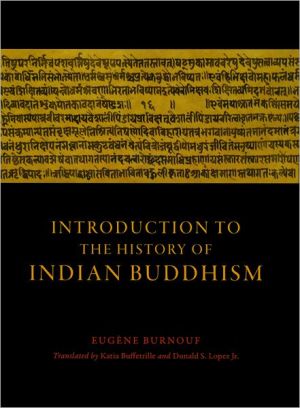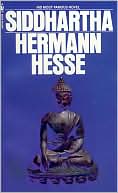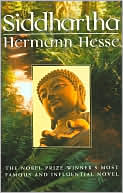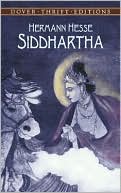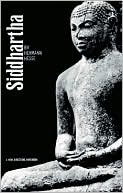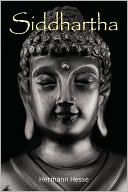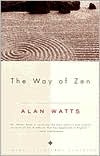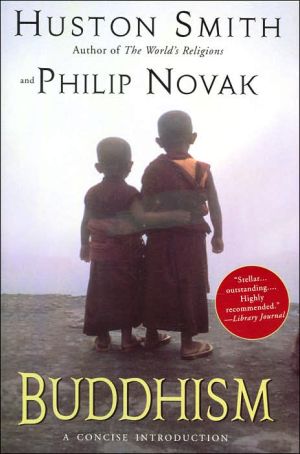Introduction to the History of Indian Buddhism
The most influential work on Buddhism to be published in the nineteenth century, Introduction à l’histoire du Buddhisme indien, by the great French scholar of Sanskrit Eugène Burnouf, set the course for the academic study of Buddhism, and Indian Buddhism in particular, for the next hundred years. First published in 1844, the masterwork was read by some of the most important thinkers of the time, including Schopenhauer and Nietzsche in Germany and Emerson and Thoreau in America. But a century...
Search in google:
The most influential work on Buddhism to be published in the nineteenth century, Introduction à l’histoire du Buddhisme indien, by the great French scholar of Sanskrit Eugène Burnouf, set the course for the academic study of Buddhism, and Indian Buddhism in particular, for the next hundred years. First published in 1844, the masterwork was read by some of the most important thinkers of the time, including Schopenhauer and Nietzsche in Germany and Emerson and Thoreau in America. But a century and a half on, Burnouf’s text has largely been forgotten.All that changes with Katia Buffetrille and Donald S. Lopez Jr.’s English translation of this foundational text. Reemerging here as a vibrant artifact of intellectual history and as a progenitor of the often colorful genealogy of Buddhist studies, Introduction to the History of Indian Buddhism provides a clear view of how the religion was understood in the early decades of the nineteenth century. Burnouf was an impeccable scholar, and his vision, especially of the Buddha, continues to profoundly shape our modern understanding of Buddhism. Indeed, the work offers a wellspring of still-valuable information and insight into the theory and practice of Buddhism. In reintroducing Burnouf to a new generation of Buddhologists, Buffetrille and Lopez have revived a seminal text in the history of Orientalism.
INTRODUCTION TO THE HISTORY OF INDIAN BUDDHISM\ \ By EUGÈNE BURNOUF \ The University of Chicago Press\ Copyright © 2010 The University of Chicago\ All right reserved.\ ISBN: 978-0-226-08123-6 \ \ \ Introduction\ Introduction to the Translation\ Introduction à l'histoire du Buddhisme indien by the great French scholar Eugène Burnouf (1801–1852) was the most influential work on Buddhism to be written during the nineteenth century. In important ways, it set the course for the academic study of Buddhism, and especially Indian Buddhism, for the next century. Burnouf's Introduction would influence two audiences: it offered scholars both a method of analysis and a massive amount of information about Buddhism; it offered the educated public a wealth of Buddhist literature, and a portrait of the Buddha, that would captivate the European imagination for decades. For both scholars and the public, it also played a key role in the creation of Buddhism as a "world religion," one that set forth an ancient philosophy that seemed simultaneously to be most modern. This masterpiece, first published in 1844, is largely neglected today. One might argue that the book has all but disappeared and remains unread and unexamined, not because it is outdated or has been superseded (although it is and has been on a number of individual points), but because it became so fully integrated into the mainstream representation of Buddhism, which it helped to create, that it is no longer visible.\ Burnouf's massive work (647 pages in the original edition) is of high historical value, providing a clear window onto how Buddhism was understood in the early decades of the nineteenth century, just when the Buddhist traditions of Asia were beginning to be studied by the philologists of Europe. At the same time, it is not simply a monument of antiquarian scholarship; the work offers a vast fount of still accurate information and insight into Buddhist religion and philosophy, as well as hundreds of pages of translations from important Buddhist texts. And Burnouf's theories on the Buddha's teachings and the development of his doctrine remain both fascinating and instructive. Indeed, Burnouf's Introduction was a seminal text in Europe's formation of Buddhism as a textual object—a tradition properly understood first from its ancient texts, rather than from the words and practices of its contemporary adherents. Since the time of Burnouf, the primary task of the scholar of Buddhism has been the acquisition, editing, translation, and interpretation of texts.\ As its modest title suggests, Introduction à l'histoire du Buddhisme indien was the first work to introduce Indian Buddhism to Europe. The significance of Burnouf's achievement was immediately recognized. In 1845 one of the first substantial reviews of the work, by Eduard Roer (1805–1866) in the Journal of the Asiatic Society of Bengal, began:\ It is with great satisfaction, that we hail the appearance of a work, which will, we suspect, form an epoch in our knowledge of Buddhism.... As a fortunate combination of circumstances had concentrated at Paris all the first and secondary sources for the history of Buddhism, a man was required who united to a profound knowledge of the ancient languages of India, an acquaintance with modern languages and literature of the Buddhists, the critical tact of the philologist and historian, and the comprehensive grasp of the philosopher, qualities, which in E. Burnouf are most happily blended together.\ Indeed, what Burnouf published in 1844 would both establish the foundation and set the agenda for the study of Indian Buddhism for the next century and beyond. He provides lengthy discussions of the discourses of the Buddha, the sutras; the code of monastic conduct, the vinaya; and the metaphysical treatises, the abhidharma. Burnouf offers extended passages translated from a great variety of texts, including many tales of the Buddha's disciples, the avadanas. There are essays on topics that continue to draw the attention of scholars, such as the meaning of terms like nirvana and pratityasamutpada (dependent origination). There are also discussions of obscure terms for weights and measures and of varieties of sandalwood. Yet Burnouf does not simply summarize the contents of the manuscripts. He presents acute analyses, most of which remain compelling, seeking always to understand Buddhism within its historical, cultural, and geographical context as, above all, an Indian religion, rather than a free-floating philosophy untouched by the circumstances of its time and place, as it would come to be regarded by so many.\ Burnouf's book was studied assiduously not only by his illustrious students, but by the next generations of European scholars of Buddhism, such as Sylvain Lévi, Otto Franke, Hermann Oldenberg, Émile Senart, Theodor Stcherbatsky, F. W. Thomas, E. J. Thomas, Louis de la Vallée Poussin, and Alfred Foucher. A work of similar scope would not be produced for more than a century, when in 1958 the Belgian scholar Monseigneur Étienne Lamotte, a direct heir of Burnouf's legacy, published Histoire du Bouddhisme indien (no longer in need of an introduction), a work that remained untranslated into English for only thirty years.\ The influence of the Introduction extended well beyond France, and beyond the infant discipline of Buddhist studies. It was read in America by Ralph Waldo Emerson and Henry David Thoreau. On May 28, 1844, the year of the Introduction's publication, the Sanskrit instructor at Yale, Edward Eldridge Salisbury (1814–1901), a Congregationalist deacon and student of Burnouf, delivered a lecture entitled "Memoir on the History of Buddhism" at the first meeting of the American Oriental Society. This fifty-page report, based largely on Burnouf's work (and eventually published in the Journal of the American Oriental Society in 1849), was the first scholarly article on Buddhism to be written by an American.\ Burnouf's Introduction was read in Germany by Schopenhauer, Nietzsche, and Schelling, who praised it for refining his understanding of nirvan. a and noted how remarkable it was that France, with its political instability, could produce a man like Burnouf. Wagner wrote, "Burnouf's Introduction to the History of Indian Buddhism interested me most among my books, and I found material in it for a dramatic poem, which has stayed in my mind ever since, though only vaguely sketched." The material for this poem came specifically from Burnouf's description of the Sardulakarnavadana (pp. 222–23). Wagner's Buddhist-themed opera, Die Sieger, although listed in the timetable he had presented to King Ludwig II, was unfortunately never completed.\ Before the publication of the Introduction, the few academic studies of Buddhism had taken the form of scholarly articles in journals such as Asiatick Researches, Transactions of the Royal Asiatic Society, Transactions of the Literary Society of Bombay, and Journal des Savans. Dr. Francis Buchanan of the East India Company drew heavily on information from the Italian missionary to Burma, Father Vincenzo Sangermano, in his "On the Religion and Literature of the Burmas," published in Asiatick Researches in 1801. Julius von Klaproth's life of the Buddha, based largely on Mongolian sources, appeared in two installments in the 1824 Journal Asiatique. Consequently, in surveying European knowledge of Buddhism in his 1845 review, Eduard Roer noted that the initial understanding of Buddhism in Europe had come from "secondary sources," that is, works in Chinese, Burmese, and Mongolian, leading him to observe, "Our first acquaintance with Buddhism was in fact not a kind to invite research; the mixture of extravagant fables, apparent historical facts, philosophical and religious doctrines was so monstrous, that it seemed to defy every attempt to unravel it."\ Burnouf was the first to attempt to "unravel" Buddhism from Sanskrit sources. He would do so, not in a scholarly article, but in the first European monograph, and a huge monograph, devoted entirely to the subject of Buddhism.\ It was a work that would be deployed in a variety of ways in the decades after Burnouf's death. In the second half of the nineteenth century, many sought to find links between Buddhism and Christianity. Such links were sometimes sought in an ecumenical spirit; the great historian Jules Michelet, a close friend of Burnouf's, wrote that in his words he "plainly saw the unique miracle of the two Gospels, the one arising from the Orient, the other from the Occident." At other times, Burnouf's work was used by missionaries seeking to understand the spirit of Buddhism in order to convert its followers. Still others read Burnouf with different motives, as certain European and American scholars attempted to locate an Aryan, rather than Semitic, origin for Christianity.\ Yet despite its influence, Burnouf's Introduction was not reprinted until 1876, and has not appeared since. Apart from an inadequate translation of a small portion of the text, it has never been translated into English.\ THE LIFE OF BURNOUF\ Eugène Burnouf was born in Paris on April 8, 1801, the son of the distinguished classicist (and translator of Tacitus) Jean-Louis Burnouf (1775–1844). He received instruction in Greek and Latin from his father and studied at the Lycée Louis-le-Grand. In 1822 he entered the École des Chartes, receiving degrees in both letters (licence-es-lettres) and law (licence en droit) in 1824. He then turned to the study of Sanskrit, both with his father and with Antoine Léonard de Chézy (1773–1832). In 1814 chairs in Indology (Langues et littératures sanscrites) and Sinology (Langues et littératures chinoises et tartares-mandchoues) had been established at the Collège de France, with Chézy appointed to the first and JeanPierre Abel-Rémusat (1788–1832) appointed to the second. Burnouf published his first translation from the Sanskrit in the Journal Asiatique in 1823, the legend of the snake and the frogs from the Hitopadesa, a famous anthology of animal tales. In 1824 he published "Sur un usage remarquable de l'infinitif sanscrit" in the same journal.\ In 1826 Burnouf published, in collaboration with the young Norwegian-German scholar Christian Lassen (1800–1876), Essai sur le pâli (on Pali, the canonical language of Theravada, or, as it was called at the time, Southern Buddhism). By his subsequent standards, it was a brief 222 pages in length, and included some examples of Pali alphabets. The work is devoted mainly to grammar and orthography, as well as discussions of the origins and extent of Pali, and comparisons of Pali with other Prakrits. Although Buddhism is not the chief focus of the study, it is oft en mentioned, especially its role in the dissemination of Pali in Southeast Asia. There is also a discussion of various Buddhist traditions concerning the date of the death of "Shakya Mouni Bouddha," a topic to which Burnouf would return. The appendixes include descriptions of several Buddhist manuscripts in Pali.\ Also in 1826, Burnouf was appointed adjunct secretary of the Société Asiatique, which had been founded in 1822; he would become secretary in 1832. And in that same year, he married Reine Victoire Angélique Poiret, with whom he would have four daughters. In 1829 Burnouf was named professor in general and comparative grammar at the École Normale. While there, he received an award from the Count de Volney for his work in "the transcription of Asiatic scriptures in Latin letters."\ In addition to his work in Sanskrit and Pali, Burnouf was an accomplished scholar of Avestan, the sacred language of Zoroastrianism, practiced by the Parsis in India. Between 1829 and 1833 (with a final volume in 1843) he published, at his own expense and with fonts of his own design, a lithograph (in 562 pages) of the Vendidad Sadé (or Videvdat) from a manuscript in the Bibliothèque Royale, brought to Paris by Abraham Hyacinthe Anquetil-Duperron (1731–1805). This collection contains works on myth, doctrine, and law, in the form of dialogues between Ahura Mazda and Zoroaster. Between 1833 and 1835, Burnouf published Commentaire sur le Yaçna, l'un des livres liturgiques des Parses, a translation of a commentary on the Yasna ("worship" or "oblations"), the main liturgical section of the Avestan canon. Composed of seventy-two chapters, it contains the gathas, or verses, the oldest section of the Avesta, traditionally regarded as having been composed by Zoroaster himself.\ A deadly cholera epidemic struck Paris in 1832, during which both Chézy and Abel-Rémusat died. Burnouf was appointed to succeed his teacher as chair of Sanskrit at the Collège de France; Burnouf's friend Stanislas Julien (1797–1873) was selected to succeed Abel-Rémusat. In his inaugural lecture on February 1, 1833, Burnouf made no mention of Buddhism, but he expressed the enthusiasm of the age, describing ancient India as possessing "perhaps the richest literary history that a people can offer to the curiosity and admiration of Europe." He concluded:\ It is India, with its philosophy and myths, its literature and laws, that we will study in its language. It is more than India, gentlemen, it is a page from the origins of the world, of the primitive history of the human spirit, that we shall try to decipher together.... There is no philology without philosophy and history. The analysis of the operations of language is also a science of observation; and if it is not the very science of the human spirit, it is at least one of the most astonishing faculties with whose aid the human spirit manifests itself.\ Although now occupying the chair of Sanskrit, Burnouf continued to publish studies of Avestan language and literature. His major project, however, was Le Bhagavata Purana ou histoire poétique de Krîchna, which contained the Sanskrit text, translation, and learned comments on the Bhagavata Purana, the famous Hindu compendium of the legends of Krsna. He published three large volumes (of 768, 725, and 681 pages, respectively) between 1840 and 1847 and planned as many as three more volumes in order to present all twelve cantos of the text.\ Burnouf was also renowned for his erudition and dedication as a teacher. In a letter to Lassen in 1835, he wrote, "My students in Sanskrit are still not sufficiently advanced to take part in my work in a useful manner. They do me the honor of believing what I tell them; but I need them to discuss it and, through their doubts, force me to find something new." His students included some of the greatest scholars of the day from both France and elsewhere in Europe, and at least one from America, figures such as Philippe Edouard Foucaux (1811–1894), who translated the Lalitavistara from the Tibetan in 1848; Hippolyte Fauché, translator of the Ramayana and the Mahabharata; Théodore Pavie, author of Les Babouches du Brahmane; the brilliant and controversial biblical scholar Ernst Renan; the Belgian Félix Nève, student of the Rg Veda who went on to become professor at the Catholic University of Louvain; Adolphe Pictet, Swiss scholar of comparative linguistics; Gaspare Gorresio, who would hold the first chair of Sanskrit in Italy; Alexandre Langlois, who provided the first translation of the Rg Veda into French; and Édouard Lancereau, translator of the Pancatantra. In his diary entry of March 20, 1845, Friedrich Max Müller described his first meeting with his future teacher: "Went to see Burnouf. Spiritual, amiable, thoroughly French. He received me in the most friendly way, talked a great deal, and all he said was valuable, not on ordinary topics but on special. I managed better in French than I expected. 'I am a Brahman, a Buddhist, a Zoroastrian. I hate the Jesuits'—that is the sort of man. I am looking forward to his lectures."\ It was shortly aft er his appointment to the chair of Sanskrit at the Collège de France that the Société Asiatique, of which Burnouf was then secretary, received a communication from Brian Houghton Hodgson, British resident at the Court of Nepal, offering to send Sanskrit manuscripts of Buddhist texts to Paris. The receipt of these texts would change the direction of Burnouf's scholarship for the last fift een years of his life (described in the next section). It is the case, however, that either his studies of Avestan texts—he is also credited with deciphering the Old Persian cuneiform inscriptions of Darius and Xerxes found at Persepolis—or his studies of Sanskrit literature would have assured his place in the history of Oriental studies in the nineteenth century, even if he had not turned to the Buddhist studies that would be his most enduring legacy.\ Until a full study can be made of the "Fonds Burnouf " in the Bibliothèque Nationale—twenty volumes of correspondence (including some of his father's papers)—an account of Burnouf's life is largely an account of his scholarship. Apparently suffering from poor health for most of his short life, he left France on only two occasions, and both times for research. He traveled to Germany briefly in the late summer of 1834 and to England in the spring of 1835, where he visited the British Museum, the library of Haileybury (the college of the East India Company), and the Bodleian. Although Burnouf was a devoted husband and father, his life was dedicated to study: he was at his desk each day by 3:00 AM, a practice that his contemporaries blamed for his early death. Even by the high standards of Paris in the first half of the nineteenth century, both the breadth and the depth of his learning are impressive. The 358-page catalogue of his library, prepared for an auction held in 1854, lists 2,730 books and 218 manuscripts divided into the following subjects: theology; jurisprudence; philosophy; natural sciences; fine arts; linguistics, languages, and literatures; geography and voyages; history of religions; history; archaeology; biography; bibliography; texts printed in India; and manuscripts (in the following categories: Zend, Sanskrit, Nepalese Buddhist, Pali, Indian dialects, Burman, Siamese, Sinhalese, Tibetan, French). Among the manuscripts were fifty-nine Buddhist writings from Nepal, to which we shall shortly turn.\ (Continues...)\ \ \ \ \ Excerpted from INTRODUCTION TO THE HISTORY OF INDIAN BUDDHISM by EUGÈNE BURNOUF Copyright © 2010 by The University of Chicago. Excerpted by permission of The University of Chicago Press. All rights reserved. No part of this excerpt may be reproduced or reprinted without permission in writing from the publisher.\ Excerpts are provided by Dial-A-Book Inc. solely for the personal use of visitors to this web site. \ \
AcknowledgmentsIntroduction to the Translation, by Donald S. Lopez Jr.A Note on the Translation INTRODUCTION TO THE HISTORY OF INDIAN BUDDHISMTable of Contents Analytical Table of the First Two Memoranda Foreword First Memorandum: General Observations Second Memorandum: Description of the Collection of the Books of Nepal Appendixes Index
